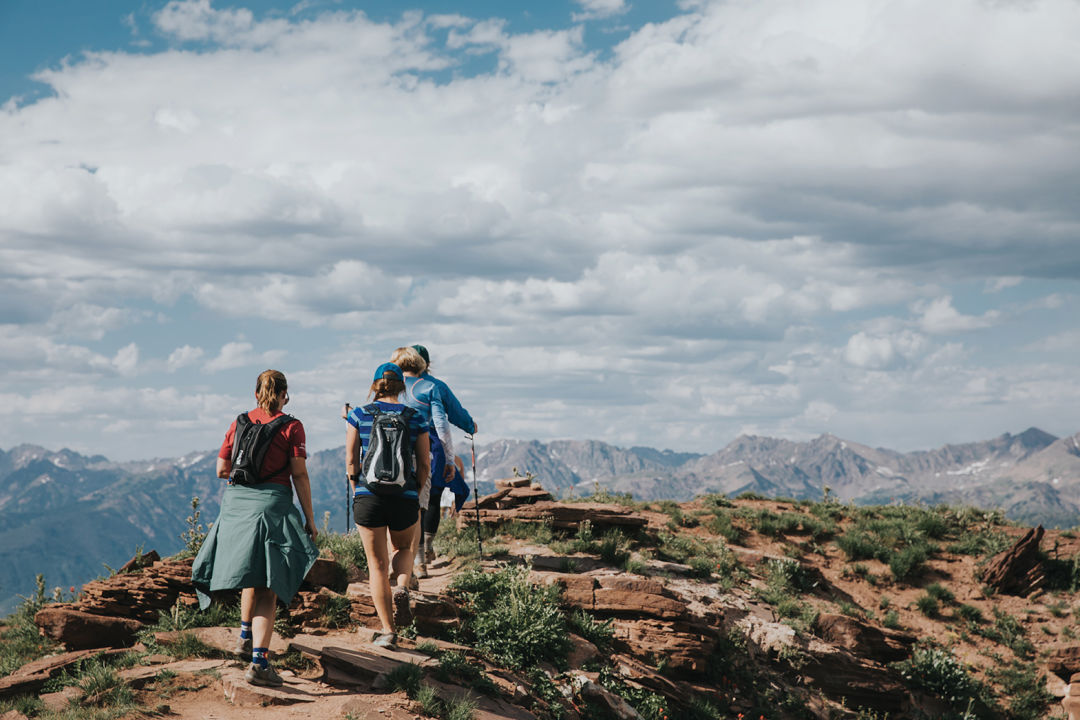A Dozen Things to Do This Summer

Walking Mountains Science Center offers guided backcountry hikes on Tuesdays and Thursdays through August 10, $80.
When the time came to make hard decisions about Vail’s present and future this spring, no one had to explain the perils of Covid-19 to the town’s mayor. Dave Chapin, a western New York native who’s lived in Vail for almost 40 years, was one of the town’s early documented cases of the disease. Chapin was healthy and fit—with 80 ski days under his belt, on pace for well over 100—when he felt his first symptoms in mid-March. He tested positive for the virus on March 14, the same day Vail Mountain closed, along with all of Colorado’s ski resorts, by order of the governor.
“I was really sick for four or five days, didn’t eat, chills, fever, severe body aches, all that stuff,” Chapin says three months later, fully recovered. He never suffered upper respiratory problems, which can prove fatal, but it took 16 days for his health to return. By then, life in the Vail Valley—eerily emptied of tourists, vacation homeowners, and seasonal workers during what typically is one of the busiest times of the year—had changed, perhaps forever.
Chapin, who is 61 and a partner in Vendetta’s restaurant in Vail Village, spent the next few months trying to protect the community’s health as well as its economic future. He donated blood, since his bout with the virus left him with valuable plasma that could be used to help others survive their own infections (a doctor in Denver recovered thanks in part to plasma that came from the Vail Valley). And he oversaw a vast reimagining of the town’s summer business model—one that will proceed in a fashion as close to normal as possible, while normal itself is taking a year off.
“We suffered some terrible losses to this virus—I know a few people who unfortunately did succumb to Covid-19, and they’re going to be missed by our whole community,” Chapin says. “But we’ve settled into more predictable patterns. I think we’re going to have a good summer.”
Only, he adds, it’s going to be different. After all, almost all of the village’s (and the entire valley’s) marquee summer events were canceled, from the Bravo! Vail Music Festival to the GoPro Mountain Games to Gourmet on Gore. So, what’s a tourist visiting between the Solstice and the Equinox supposed to do? The list, like the valley’s warm summer days, remains long.
At press time, Vail Resorts announced its gondolas on Vail Mountain and Beaver Creek would open to scenic rides and bike hauls on July 1, but even if they’re not running when you’re here, you can still browse ultra-pedestrian-friendly iterations of Vail Village and Lionshead, with restaurants and retail shops expanding into the car-free streets. A new ordinance passed by the town means you can enjoy alcoholic beverages while strolling both villages, and the Vail Farmers Market & Art Show returns every Sunday from July 5 to October 4 on East Meadow Drive, offering fresh produce, artisan food, art, and jewelry from 10 a.m. to 3:30 p.m., as well as four can’t-miss farm-to-table dinners (6 p.m., July 10 & 24, Aug 7 & 21; $125, vailfarmersmarket.com). The Vail Golf Club is open (from $35 for nine holes with no cart, vailgolf.com), as is the Colorado Snowsports Museum (open daily 11 a.m.–4 p.m., $5 donation, snowsportsmuseum.org), and the Betty Ford Alpine Gardens (gardens open daily dawn to dusk, education center open Mon–Fri 10 a.m.– 4 p.m., bettyfordalpinegardens.org) remains a blissful place to behold kaleidoscopic colors and enjoy a picnic next to Gore Creek (order your gourmet basket—baguette, sheep’s milk cheese, charcuterie, macarons, and other goodies—from La Tour Restaurant & Bar; available Wed–Sun, from $49, latour-vail.com).
In Avon, Walking Mountains Science Center offers free, hour-long nature walks most days at 2 p.m., and the EarthKeepers preschool program provides an educational way to introduce kids ages 3 to 5 to the outdoors. The center also runs guided hikes two days a week, varying among peaks (like 14,005-foot Mount of the Holy Cross), passes (like Red Buffalo in the Gore Range), and lakes (from Booth to Lost). You can also sign up for half-day programs detailing climate change’s impact on the local environment or trailside ecology, with a heavy dose of wildflower viewing. “As things loosen up, and if there’s a lot of demand, we may add hikes as the summer goes on,” says Marketing Director Paul Abling (check walkingmountains.org for the latest schedule).
Blue Starlite High Rockies drive-in theater in Minturn screens a robust lineup of films all summer on the banks of the Eagle River, with some adjusted rules (no walk-ins or watching from the bed of your pickup, for example). Usually open Wednesday through Sunday, the lineup includes classic blockbusters like Jurassic Park, The Goonies, and Ferris Bueller’s Day Off (from $27 per car, bluestarlitedrivein.com).
In Edwards, you can take a horseback ride through wildflower meadows with Bearcat Stables, ranging from one to four hours and tailored to a range of skills ($70–$160, bearcatstables.com). Farther downvalley, outfitters like Timberline Tours (timberlinetours.com), Sage Outdoor Adventures (sageoutdooradventures.com), and 4 Eagle Ranch (4eagleranch.com) deliver world-class whitewater rafting, Jeep tours, ATV rides, fly-fishing trips, and zip line tours. The Eagle Outside Festival, a lively gathering of cyclists and gear nerds, will host races, demos, and rides for all ages and skill levels August 28–30 (eagleoutsidefestival.com).
“Clearly it’s not going to be what our summers have grown to be, but it may be like our summers were 20 years ago,” says Chapin, looking on the bright side, “when we didn’t have as many events and things going on, and we didn’t have as many people living in Colorado. There’s an opportunity to emphasize quality over quantity—a chance for people to up their game and improve on what they do best.”






































